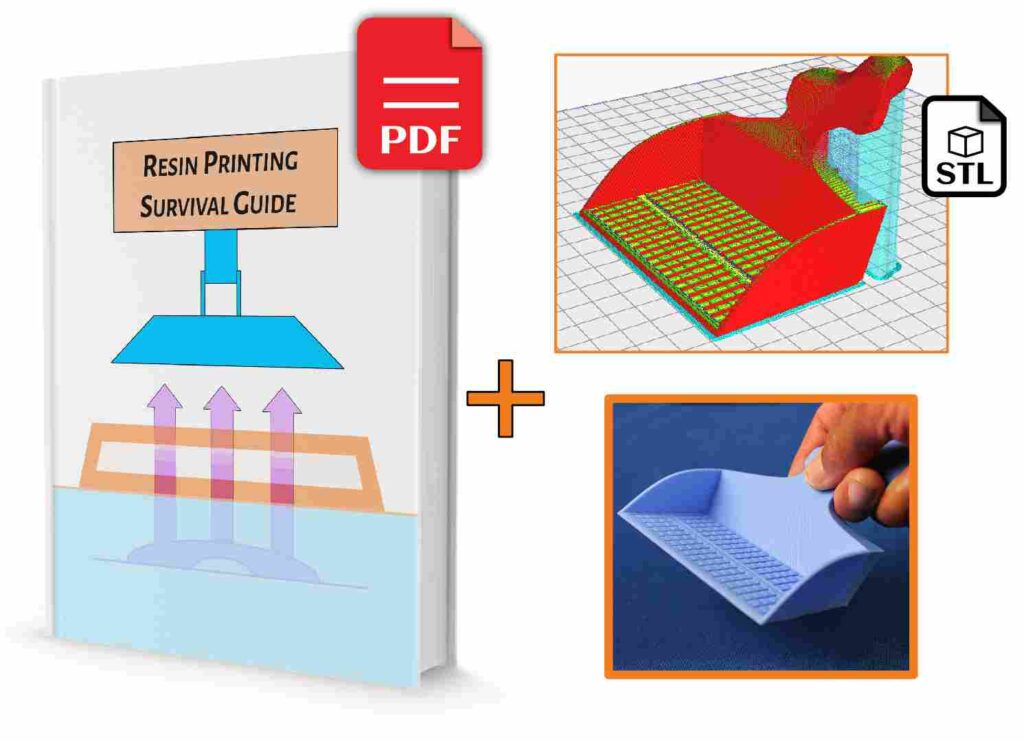Conjure Rigid Resin by Chitu System – What to Know
Testing Results
So is the “Conjure Rigid” by Chitu System any good or not? Well, we’re going to take a closer look at it today. I was sent this product free of charge, but no money has exchanged hands, and they have no say in what goes into this review.
So although I did receive this almost a month and a half ago, I wanted to take my time to do a proper review of this product and really test out their claims. So I tested it for miniatures and functional parts and discovered some things you’ll want to keep in mind if you pick this up. While unboxing this product, I did have some concerns about the design of the bottle. Inside the cap there is an additional seal to prevent leaks, however resin gets easily caught in the edge of the rim when pouring. If this isn’t cleaned properly before being stored, it can start leaking or dripping along the edges of the bottle. Now, so long as the bottle isn’t exposed to UV light this isn’t a huge issue, but it can become permanently sealed if it cures. It is for this reason that storage will be very important when dealing with this product.
The overall viscosity is thicker when compared to most standard resins, however I find this to be consistent with most of the industrial resins that I’ve used in the past. Similarly, the black version is much thicker than any other colour, so ensuring that you use it in an area that’s above the recommended 25°C will help you achieve better results. This product smells extremely strong in comparison to other products and although this isn’t a measure of the level of toxicity, I would recommend using proper ventilation practices as referred to in my safety video.
Chitu Systems did a great job about making the print settings available on their website, and for the most part it was pretty much plug and play with the settings that were provided. The one issue that I did have, was that, due to the flexibility of the material. I did have to modify my support settings to account for this, especially when printing small, detailed prints. So how did I end up changing these to work with this resin? We’ll First off, I added much thicker supports on the main regions of the model which would properly anchor it to the build plate. I then increased my lighter supports middle diameter and top lower diameter, so they would stay more rigid. I unfortunately found that I couldn’t rely on the automated support when it came to smaller models due to them flexing during their printing. While this was more time-consuming, it did mean that I could ensure the supports were far enough not to get stuck onto the model. I also increased the bottom exposure of the first layer, which helped keep the model attached to the build plate. Once again most of these issues were more prominent with the black resin, and although I’m unsure as to the reason it’s something to be mindful.
This resin does come with explicit instructions to use preferably 95% isopropyl alcohol when cleaning. While I can’t confirm this to be the case, since I changed cleaning solution at the same time. I can say that I had more difficulty cleaning the black resin, which is most likely due to the higher viscosity or thickness of the material. It should also be noted that I clean all of my prints with a two container approach, since I’ve found this to work much better overall.
Now, although this material does remain flexible after it has just cured, I found it still sanded and cut quite well. So cleaning up the models prior to painting was fairly easy once cured. While the parts can still break just like any resin, I did find that the shape of the part made the biggest difference in this regard. All the weapons that I printed for my models stood up well to being bent after having just cured, while the tips of the tails keep breaking off. Now, to be honest, this is more about the shape of the design than anything else. Essentially, whenever you have a shape this, you tend to create an area where tension and stress can build up at the pinching point. This in turn makes them more likely to break. So when removing support material, those will be the areas that need to pay attention.
One property of UV curable resins is their tendency to become more brittle over time, and this is important to be aware of when using this material. One of my favourite resins by another company has this same issue, and after about 2 weeks I generally find that the resin has stabilized more, at which point I can better test the fragility of the material for the application. This resin is no exception in this regard, and became much more brittle after the two-week period. While I don’t have the proper methods for measuring shrinkage of a material, I am assuming that there is some additional shrinkage that may be occurring as the resin becomes more brittle. So depending on the application, this is something that should be tested prior to beginning production.
Important Notes
- Needs to be printed in temperature above 25°C
- Becomes more brittle over time
- Is flexible
- Has a strong odour (use proper ventilation as described in this Article)
- High Viscosity (very thick)
Links
- Proper Resin Safety
- Cleaning Tricks
- What is SLA Printing
- How it’s Done
- FEP Sheet Replacement
- Cover Mod
- Product link HERE
© Yarkspiri Fantasy Art
Yasmeen completed both the 2D and 3D animation course at Algonquin College and worked in the animation industry as a freelancer for a number of years before being hired to manage the 3D printing services at ItsYeBoi. While using the Alias of "Jenny" during her services, she was responsible for the testing, maintenance and upgrading of the machine while also filming and developing 3D printable assets for various projects.


